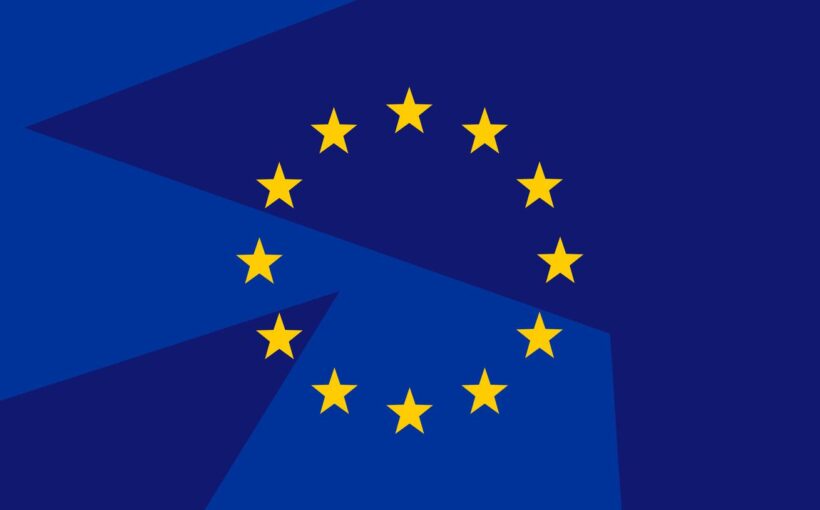It’s become a cliché to say the painful surge in inflation that started in 2021 was primarily caused by the European Central Bank’s sluggish response to rising prices.
But inflation is now slowing decisively — and the guardians of the euro are seizing the moment to say, actually, they were right all along.
The ECB’s research department has been cranking out various pieces in recent weeks emphasizing the extent to which inflation was driven by events out of its control, namely the upheavals of the pandemic and the Russia-induced energy crisis — shocks which its models were ill-equipped to handle.
This was the reason the ECB — along with most other central banks — said at the time that inflation was primarily a ‘transitory’ shock caused by supply-side issues. Monetary policy, by contrast, works by affecting levels of demand in the economy, using interest rates to adjust the relative attractiveness of saving and consuming.
“Monetary policy could not bring down energy prices,” said one senior ECB official who was granted anonymity to speak openly. He said the bank made the right call back in 2021 not to raise rates, even as inflation rose to nearly 5 percent.
At a conference in March, Chief Economist Philip Lane argued in a presentation that inflation would have come in only marginally lower had the ECB moved sooner. At the same time, he said, tightening earlier would have inflicted considerably more harm on the economy, depressing output by around 2 percentage points or more well into 2025.
Davide Oneglia, Europe director at TS Lombard, observed wryly that such things have to be taken with a pinch of salt: “Central bankers love counterfactuals and unobservable variables” that look scientifically grounded and are difficult to disprove, he said.
Seeing the inflation shock as temporary was the consensus view back in 2021. And plenty of research ink has been spilled defending it since, not least this landmark piece by Ben Bernanke, the former Federal Reserve chair, and Olivier Blanchard, chief economist of the International Monetary Fund.
When the ECB’s economists, under director-general for economics Oscar Arce, applied the Bernanke-Blanchard model to the eurozone, they found that supply-side factors dominated even more, due to Europe’s greater exposure to energy supplies from Russia.
“The data and the experience shows that the European inflation was more supply-side than the U.S. one,” agreed Dimitris Valatsas, CEO of Aurora Macro Strategies.
And recent data have certainly given comfort to that notion. Slowly but surely, inflation is coming down, hitting 2.4 percent in March, only just above the 2 percent target. The ECB is now signalling it will probably begin lowering borrowing costs by June.
Where did they err?
But critics — and even some of the ECB’s own top officials — still maintain that the central bank was too slow to start tightening policy. President Christine Lagarde has acknowledged that it was a mistake to keep the guidance of her predecessor Mario Draghi, who insisted that the ECB shouldn’t raise rates before it had stopped buying bonds under its quantitative easing program. Lagarde had massively amped up QE at the start of the pandemic, giving the process a momentum that was hard to stop.

Conspicuously, the Bernanke-Blanchard paper doesn’t ask what role the vast excess liquidity created by 2021 might have played in fuelling the inflation episode. Nor is that something that Frankfurt has liked to dwell on much, although the hawkish markets head Isabel Schnabel, whose influence has grown as the inflation episode dragged on, pointedly asserted the contribution of money growth in a speech last September.
Not everyone is content to airbrush that out of the picture, though.
“In the end, the general price level was only able to rise as much as it did because monetary policy had provided a loose enough envelope,” said Berenberg economist Salomon Fiedler.
Oneglia argued there is probably a degree of personal face-saving in the ECB’s recent output, given that Lane was the brains behind the bank’s reaction function in late 2021.
“Blindsided by the intensification of the energy crisis and the fallout from the Ukraine invasion, Lane and his team became convenient scapegoats,” Oneglia said. “Their forecasts were ridiculed and their weight on policymaking was greatly reduced. No surprise that after years of attacks from [ECB President Christine] Lagarde and others, Lane is trying to take some victory laps and regain policy relevance.”
Valatsas gives the Irishman a little more credit, for being honest about the ECB’s awkward position in late 2021. The ECB’s mandate requires it to focus exclusively on price stability, but its reluctance to raise rates was motivated by growth concerns. Fiedler, too, noted that “the ECB may have had other reasons apart from its inflation target for setting up this loose envelope, including supporting the finances of certain governments or stabilizing economies.”
Lane’s recent arguments, Valatsas went on, have been to say: “Hey look, we would have had to sacrifice a lot of growth for a little bit lower inflation had we moved earlier — just putting that out there, obviously I’m not allowed to care about unemployed people.”
Was it worth it?
Still, the new narrative of ‘told you so’ could backfire. ING’s Global Head of Macro Carsten Brzeski wondered whether it undercuts the ECB’s subsequent move to raise rates to record levels, inflicting considerable pain on businesses and households.
“It raises the question of whether so many rate hikes were really needed,” Brzeski told POLITICO.
The ECB has already pre-empted such speculation. It has argued that rate hikes were vital in convincing the public that something was being done about inflation, thereby preventing a collapse in trust and a more destructive wage-price spiral. Consumer expectations for inflation have indeed fallen in the last year.
Messaging is always a risk-fraught business, especially in times of repeated and — in recent history — uniquely disruptive shocks. It shouldn’t be surprising that certain ideas gain and lose emphasis over time. But the fact that every central bank in the developed world is now scrambling to withdraw excess liquidity can’t help but be seen, in part, as a judgment on past policy.
As the ECB official quoted earlier admits: “Saying you’ve been behind the curve hurts.”
CORRECTION: This article has been updated to include Isabel Schnabel’s examination of the role of monetary growth in post-pandemic inflation.



